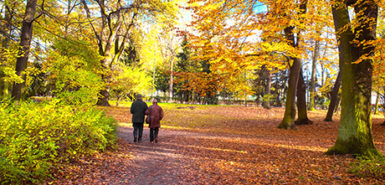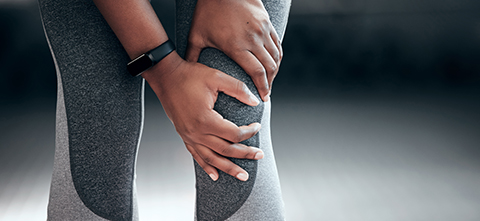
Ever feel like those aching knees and joints can predict a change in the weather?
Maybe. But don’t expect an in-depth report like you’d get on the 6 o’clock news.
Technically, when the barometric pressure drops, it can affect the lubricating fluid in your joints, said Matt Axtman, DO, a sports medicine specialist with Corewell Health’s Medical Group Orthopedics.
But that’s pretty much where the weather tie-in ends.
To truly understand arthritis and how it affects the body, you need to examine exactly what it is, Dr. Axtman said.
Quite simply, it’s a wearing down of the cartilage or protective covering around the joints.
“The cartilage covering your joints is like the tire treads on your car,” Dr. Axtman said. “Arthritis is a wearing down of that covering. As that protective covering decreases in thickness or is less smooth, it causes inflammation in the joints. This can then lead to pain and discomfort.”
The good news is, there are ways to help alleviate the pain—or even delay the onset of the condition.
The young, the old
While arthritis is more common in later years, it’s a mistake to think it only affects older adults.
“Arthritis can affect individuals of any age, depending upon their weight, genetics or an injury,” Dr. Axtman said. “But the majority of the time, it affects older people.”
It’s sometimes genetic, affecting people who have a family history of the condition. An injury can also lead to arthritis, even if the injury happened 20 or more years ago.
Being overweight can also increase the likelihood of developing this condition.
There is a distinct difference between osteoarthritis and rheumatoid arthritis, Dr. Axtman said.
Osteoarthritis, the wearing down of joint cartilage, usually occurs over time.
Rheumatoid arthritis, meanwhile, involves the body attacking the joints. The body perceives the joints as something foreign and attacks them, causing inflammation and pain, Dr. Axtman said.
That can happen at any age and it’s often genetic.
Keep on moving
The best arthritis treatment? Low-impact exercises such as biking, swimming, weightlifting and walking.
“Those are the mainstays to deal with arthritis,” Dr. Axtman said.
Anti-inflammatory medication such as acetaminophen can help. A physician can also provide an injection, such as a steroid or lubricating shot.
A knee brace may help improve things for achy knees, but for arthritis in the shoulders there is no great option for a brace.
Using ice or heat may help fight symptoms, although there’s no hard-and-fast rule on which method to use. It’s a matter of personal choice.
Physical therapy—even for a short period—can help maintain joint range of motion and strength, Dr. Axtman said. It’s also a good opportunity to learn exercises that can be performed year-round.
And while there’s no way to completely avoid arthritis if you’re already prone, certain precautions may help delay the onset.
For starters, it’s important to maintain a healthy weight and follow a proper diet, Dr. Axtman said.
Diet plays a sizable role in your body’s inflammatory responses. The Mediterranean diet, which is rich in healthy fats, carotenoids, flavonoids and spices and herbs, is proven to help fight inflammation.
Regular exercise can help maintain healthy muscle structure around every joint. Any type of movement will help the body’s natural fluids lubricate the joints.
“Exercise will be beneficial in trying to prevent arthritis from developing, but it doesn’t matter what you do—even the strongest athletes can eventually suffer from arthritis,” Dr. Axtman said.
 /a>
/a>
 /a>
/a>
 /a>
/a>